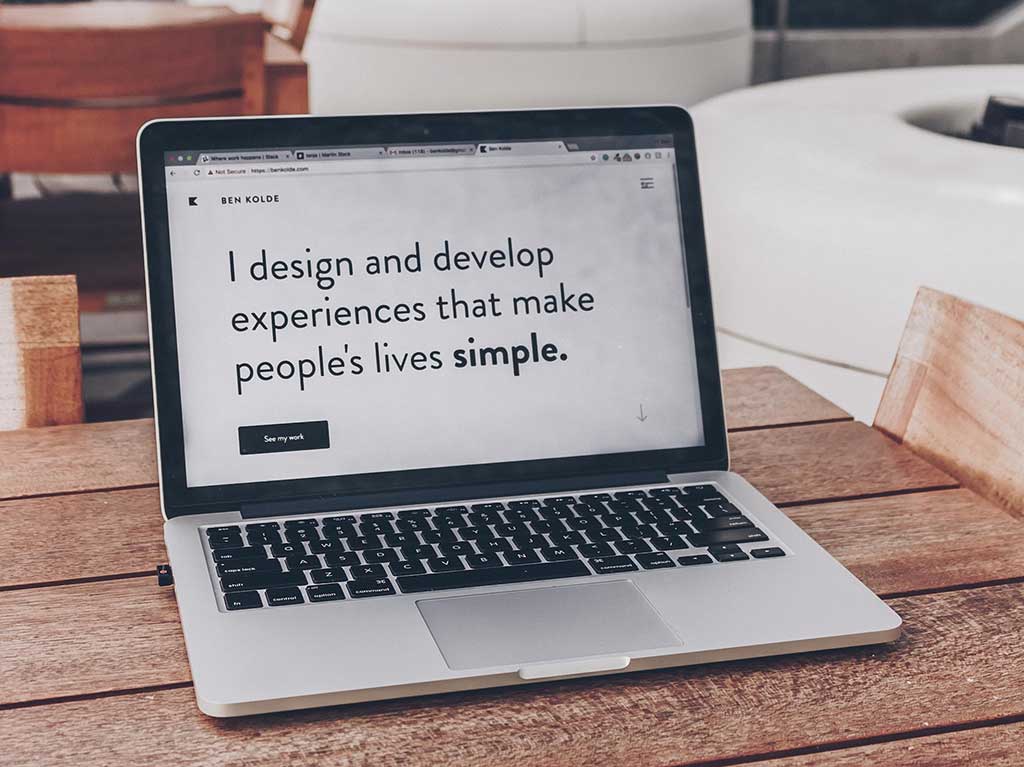Fundamentals
How to Create a Great Screener Survey for UX Research

Written by: Phil Hesketh
Published on:
Screener surveys are an incredible strategy that researchers use to audition participants for a research study.
With just a few questions, a screener survey can help you identify people on your panel who aren't your target audience, and ensure that only those who are take part in the research.
In this guide, you'll discover how to create a screener survey for your UX research, as well as the best practices to keep in mind as you're doing so.
What is a screener survey?
A screener survey (aka “screener”) is an initial survey that people take to qualify or disqualify themselves from a research study.
It’s typically done online, and is designed as a 5-10 question survey that helps your organization do some strategic sleuthing to eliminate participants who aren’t a suitable fit for your study, and surface the ones who are.
The benefits of screener surveys
Screeners are a great first step to kick off your UX research studies, and there are a few compelling reasons to use them rather than jumping straight into participant recruitment.
These survey responses can be helpful for both short term and long term research purposes. You can use the answers to find people to contact immediately for studies, and create a pool of target users who might be a better fit for future research.
Find the most relevant participants.
These initial surveys will help you quickly assess each potential participant’s behaviors, backgrounds, habits, and other essential factors that will determine whether they are (or aren’t) an ideal person to include in your research.
Ideally, you want to ensure the majority of your participants fit the criteria for each research study.
With initial screening, you’ll be able to filter out the respondents whose input will be less valuable to you, while helping you receive responses from participants who will be able to help you reach your goals.
For example, if you wanted to survey people who’ve purchased dog food in the past 3 months, you’d ask a qualifying screener question about the last time they purchased dog food.
Avoid wasting time and money on the wrong participants
UX research can be time-consuming. And if you’re incentivizing your participants as well, you want to know that you’re not spending time and budget on people who aren’t a great fit, and who can’t help you achieve your goals.
People who consent to partake in your research aren’t necessarily qualified to do so. They might not have deep enough knowledge in the topic you need to get the desired answers on, or their background might compromise the answers they give you. For example, if you’re doing research on pet food, a potential participant might work for a competing company in the pet food industry.
Screeners can help you filter out these people, and ensure a higher quality of responses.
Ensure higher ROI on your studies
You’ve prepared your UX research plan, got buy-in from executives and stakeholders, and had a budget approved. Now you’re going to need to prove some sort of ROI at the end of the study, and that means finding participants that can drive actionable outcomes.
By using a screener survey, you can ensure you’re speaking with high quality participants — and avoid those awkward research sessions where participants don’t have a strong opinion, or can’t give you the deep insights and meaningful answers you’re looking for.
Improve the participant experience
As a responsible researcher, it’s your job to ensure your participants have a great experience, and that they feel like their input has been valuable and helpful.
Screeners ensure that all the participants who move on to the research phase have a good understanding of the topics and problems you’re looking to solve — meaning they’ll have a much more enjoyable time working with you.
Ethical considerations
When you’re running screener surveys, there are a few ethical considerations to keep in mind to ensure your data collection is responsible and respectful to participants. These include:
Accessibility
- all of your potential participants should be able to complete this screener if they choose to, regardless of any disabilities they might have.
Informed consent
- you’ll need to obtain informed consent before participants take part in your screener, and explain the purpose of your survey, and how their data will be used.
Confidentiality & privacy
- let participants know how their survey data will be used and stored.
Data security
- ensure you’ve got the appropriate measures in place to ensure participant data is stored safely.
Compliance
- make sure your data collection is compliant with regulations such as GDPR and CPRA
.
If you’re using a software solution like Consent Kit, you can relax — we’ve built all of these things right into our platform so you don’t have to worry.
How do you conduct a screener survey?
Although screener surveys are short and relatively simple, they have a lot of moving parts that you need to think about to ensure their success.
Let’s take a look at what you need to think about step by step, plus some tips on how to create successful UX research screener questions.
Keep accessibility top of mind
As an responsible researcher, you’ll need to ensure your surveys are inclusive and accessible for every user.
When creating screener surveys, it’s all about setting the table for every kind of user. This isn’t some one-size-fits-all sweatshirt we’re talking about; it’s a custom-tailored suit. So, where do we start?
You’ve got to know your target audience. I don’t mean just knowing their names and emails, I mean really knowing them. Who are they? What are their abilities? What are their challenges?
Let’s imagine you’ve got a user who’s colorblind. Your gorgeous color-coded survey might look like a million bucks to most people but to them? It’s as useful as a chocolate teapot. So, you bring in contrast. High contrast between your text and background isn’t just good design; it’s good accessibility. That’s how you make sure every single user gets to feast on the information you’re serving. And it’s not just visual, either.
What if a user has motor difficulties or maybe they’re a power keyboard user? If your survey isn’t navigable by the keyboard, you’re cutting them out. That’s like saying, “Hey, you’re not invited to my party.” Not cool, right?
So, you should make sure your survey is as keyboard-friendly as it is mouse-friendly. You ensure the tab order makes sense; you provide keyboard shortcuts and instructions.
After all, the game is won by those who understand that every user matters. Every single one. No exceptions.
Maria Harutyunyan - Co-founder at Loopex Digital
Start with your goals
As part of your UX research plan, your screeners need to be written with the end goal firmly in mind. This will make it simpler to reverse engineer the questions you’ll need to achieve the goals you’ve set for your organization.
Read more: 5 steps to demystify the UX research process
Define your UX research screener criteria
Once you’ve decided on the insights you need to collect from the survey, you’ll need to define the type of participants that can help you. Things to think about here might include:
The stage of research or product development you’re looking for help with. If you’re in early stages, a broader audience match will be fine. But if you’re in the advanced phase of optimizing a product, you’ll need a more specific participant criteria.
The primary user research question you’re seeking to answer. For example “What are the friction points in our checkout page?” You’ll need to choose participants based on who can and can’t answer this specific question.
Start broad and go narrow
When you’re writing screener questions and wondering how best to structure your survey, think of your questions like a funnel that narrows down ideal participants. Start with broader questions first, and then move on to the more specific ones.
Disqualifying logic
It can be a good idea to front-load your screening questions at the start of the survey. This ensures you only take up as much of your participants’ time as you absolutely need to filter out people that meet your criteria.
But when you’re setting up the disqualifying logic in your survey, you should also consider whether you want to learn more from your unqualified participants, versus simply “kicking them out” of your screener if they’re not a match.
In some cases, it could be beneficial to set up specific questions for these people and send them to that page to get more information. If they’re not a match for the particular study you have in mind, they could be a great fit for future research.
For example:
Say you manage a supermarket and you’re looking to offer discounts for your most frequent online shoppers.
You might ask the following screener question:
“How often do you shop online for groceries?”
Daily
Twice a week
Weekly
Once every two weeks
Monthly
I don’t buy groceries online
Respondents who self-select as buying online monthly or not at all would be disqualified after this question, while the rest of the respondents continue with the survey. But you might want to ask these disqualified participants a few extra questions on a separate page that could help you understand why they choose not to shop online.
Decide on the types of questions you’ll need to ask
The questions you ask should help you learn exactly what you need to know about a person to qualify them for your UX study—such as their experience with your product or service.
It’s important you structure your screener questions in a way that filters out as many unqualified participants as possible for your qualitative and quantitative research studies.
Screener questions are typically behavioral or industry-specific, and might include things like:
Demographics - questions that filter for ethnicity, age, location, household income, gender
Employment - questions about occupation, company size, industry, and employment status
Frequency of use - e.g. “how often do you…” and “when did you last use…” questions
Questions that filter for experience with specific software or technology if you’re doing user testing
Your screener should ask questions that help you identify people for a particular study—so the more specific and focused you can make your questions, the better.
Don’t give too much away
Avoid leading questions that hint at what a “correct” response might be. You also need to ensure your questions don’t give away what your study is about or the type of people you’re looking to recruit for your research panel.
Keep the survey short
Screeners should have 5-10 simple questions with simple answer options.
If your survey is too long and complicated, you might lose ideal participants who get bored and drop out part way through. And you don’t want your unqualified participants feeling frustrated about investing a lot of time completing something they’re not a good fit for.
Having said that, make sure you have enough questions to help you get the exact responses you’re looking for!
Use simple, conversational language
Keep your language simple and accessible, and avoid complex jargon and acronyms. Write your surveys at an 8th-grade language level, and make sure all your questions are concise and clear to avoid confusing or excluding your participants.
Avoid being too vague
When you’re asking questions around behaviors such as defining frequencies, try and be as specific as you can.
Words like “often” and “rarely” mean completely different things to people in terms of time frames, so it’s better to quantify things in terms of weeks, days, or months instead.
Avoid yes or no questions
Yes and no questions should be avoided, as they can often be leading questions that cause participants to “guess” the answer you’re looking for. Instead, opt for multiple choice questions.
For example, instead of asking “Do you work at a bank?” you would reframe it as “Do you work in any of the following industries: Banking, Insurance, or Market Research?”
Or if you’re trying to find users that follow you on Instagram, try framing your question as “Do you use any of the following social media platforms: Facebook, LinkedIn, TikTok, Instagram, Twitter”
Text boxes
Long text boxes can help you get more in-depth answers if you need them for any reason.
But avoid using too many of them, as this can cause participant fatigue and researcher fatigue for the people who have to go through a bunch of lengthy answers to find suitable participant profiles.
Ask open-ended questions
Avoid straight up “yes” or “no” questions about behaviors, habits, actions, and feelings—and give your participants more choice about how they answer with either multi-choice questions or open text boxes.
Include “other” options
If you’re using research management software with conditional logic, including question responses like “other” or “none of the above” will give you a better quality of responses.
This way, participants won’t be forced into giving a “wrong” or “close enough” answer that will make your survey filtering less accurate.
Create and share your draft screener
When you’re creating your screener survey template, it can be a good idea to do this in a Google document (or similar) so you can collaborate with your team before implementing the screener in your research management or survey platform.
This can help your team and stakeholders collaborate on the types of questions that will be used, where conditional logic will apply, and how to move qualified and disqualified participants smoothly through the screener.
Wrapping up
UX research screener surveys help you find your ideal participants and disqualify people who aren’t a good fit. Now you understand how to conduct an effective screener, you’ll be able to collect more valuable responses and get higher quality results from your research initiatives.



